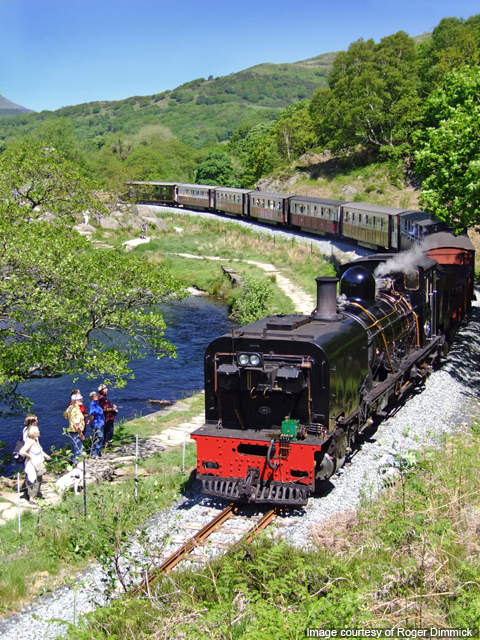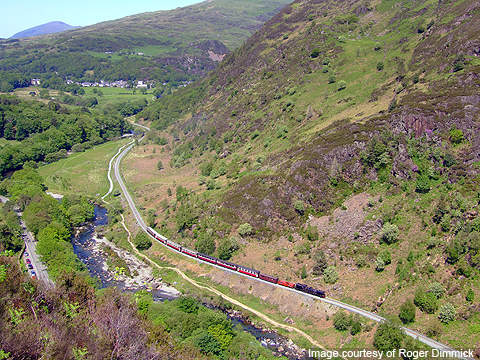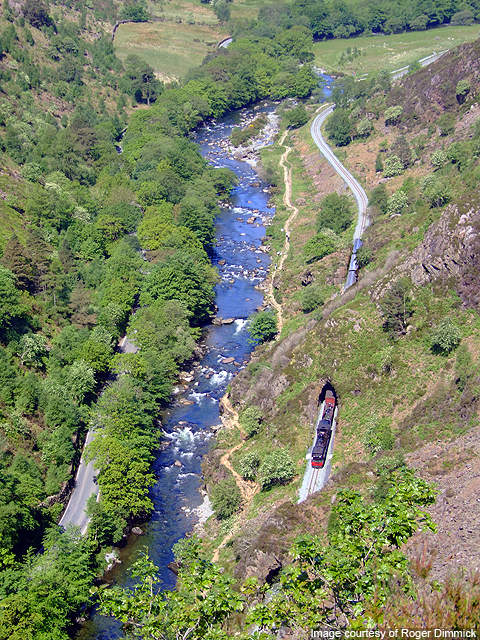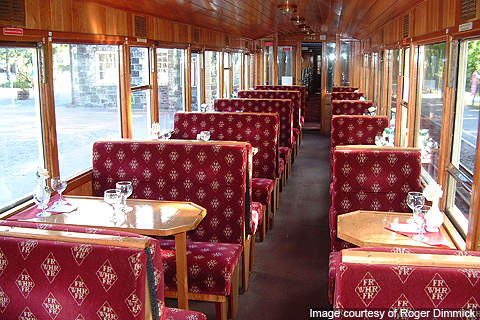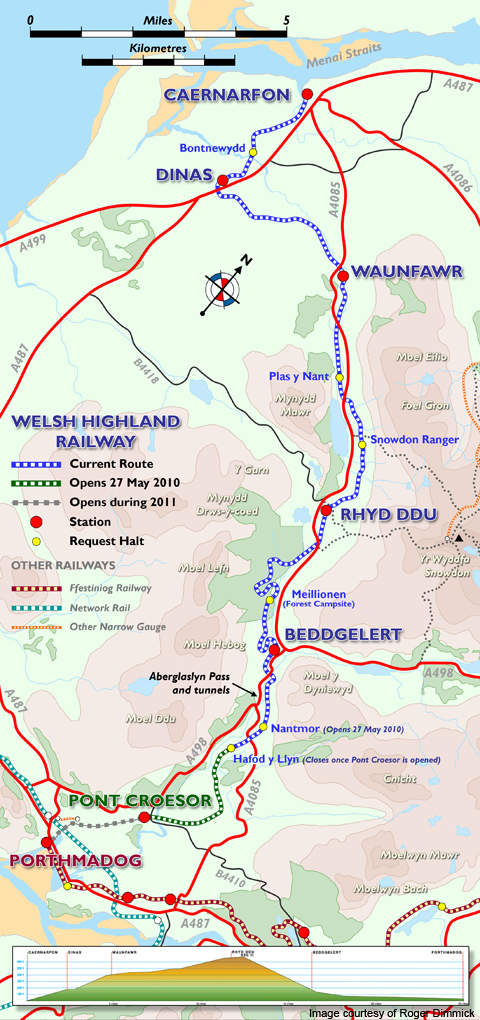The Welsh Highland Railway (WHR) project includes the restoration of an existing railway line built in the 1920s. The £28m project is being executed in four phases and will link the historic towns of Caernarfon and Porthmadog. The railway line will be 40km long when completed.
The project was undertaken to serve the local communities in Wales and provide an alternative to travelling by car for the region’s 2.9 million population. The construction of the new railway line is also expected to promote tourism in the area, which is home to major tourist attractions.
The first three phases of the railway line have already been completed and are in service. The construction of phase IV of the project has been divided into three sections. The complete railway line is expected to be fully operational by 2011.
Welsh Highland Railway (WHR) project
The WHR was first opened in 1923 between Dinas and Portmadoc towns. In 1937, the railway line closed due to a decline in passenger traffic. In 1961, a group of supporters formed the Welsh Highland Railway Society to campaign for the reopening of the railway. In 1964, the group was renamed ‘Welsh Highland Light Railway Limited’ and the campaign continued.
Following several controversies and legal battles, the government decided to start work on the WHR. Ffestiniog Railway (FR) was appointed to carry out the construction of the new railway line. FR established a subsidiary, Welsh Highland Light Railway, to execute the project.
The first phase of the project included the 5km Caernarfon to Dinas section. Construction of the section started in 1997 and the line was opened in October 1997.
Phase II of the project consisted of the 6km Dinas to Waunfawr section, which opened in September 2000. Phase III included the 19km Waunfawr to Rhyd Ddu section, which began operating in July 2003.
The final phase (phase IV) of the project consists of the Rhyd Ddu to Porthmadog section, which is being executed in three stages. The first stage includes the Rhyd Ddu to Beddgelert section, the second stage comprises the Beddgelert – Aberglaslyn – Hafod y Llyn section, and the third stage consists of the Hafod y Llyn to Porthmadog section.
The Rhyd Ddu to Beddgelert section opened in April 2009, while the Beddgelert – Aberglaslyn – Hafod y Llyn section was completed in May 2009. The Hafod y Llyn to Pont Croesor section of phase IV is scheduled to open in May 2010. The remaining part of the Hafod y Llyn to Porthmadog section will open to the public in 2011.
Major contractors involved in the project include Achnashean Contractors, Mulcair, John Mowlem, Jones Brothers, Symonds Group, Colwyn Bay Consulting Engineers, Welsh Highland Railway (WHLR), Colin Jones and Arup.
The European Regional Development Fund provided a grant of £735,600 in 1996 for constructing the Caernarfon to Dinas section. For phase IV of the project, funds totalling £5m were received under the European Union Objective 1 scheme and from the Welsh Assembly Government.
The Millennium Commission provided additional funds of £4.3m. The Welsh Development Agency, Wales Tourist Board, WHR Society and the Historic Houses Hotels also made contributions to the project.
WHR line routes
The route of the WHR starts from Caernarfon to Dinas. From Dinas, the line moves to Waunfawr and then to Rhyd Ddu. From Rhyd Ddu, the line goes on to Beddgelert, followed by Pont Croesor and finally to Porthmadog.
WHR rolling stock
The WHR is served by four 62t Beyer-Garratt NGG16 steam locomotives with an operating speed of 25mph. The locomotives are each 48ft long and carry 1,500t of water as well as 4t of coal. The K1 locomotive is also part of the WHR’s fleet. Testing is currently being carried out and the locomotives are expected to enter service in the near future.
In 1993, two diesel locomotives manufactured by CH Funkey & Co of Johannesburg were purchased for the WHR. The locomotives each weigh 27t with a 335hp engine and were the first to start services on the Caernarfon to Dinas section of the WHR.
The WHR fleet of carriages includes two Heritage coaches, three saloons, one brake saloon, three semi-open coaches, one first-class Pullman coach and bike wagons. Heritage coaches date back to the 1890s and 1920s, and were restored by FR for the WHR.
The saloons were delivered in 1997 and are 40ft long with a capacity of 36 passengers. The brake saloon has a capacity of 22, plus additional seating for passengers in wheelchairs.
The semi-open coaches provide passengers with a view of the scenery. The first coach was built by Winson Engineering and delivered in 1997. The remaining two were manufactured by Alan Keef and were delivered in 2003.
The Pullman coach, built by Winson Engineering, has a capacity of 20. The coach features luxurious interiors sponsored by Historic Houses Hotels.
B wagons, which were originally operated by South African Railways, were converted to bike wagons for the WHR. The wagons contain special racks for bicycles and enable passengers to explore the Snowdonia national park.

